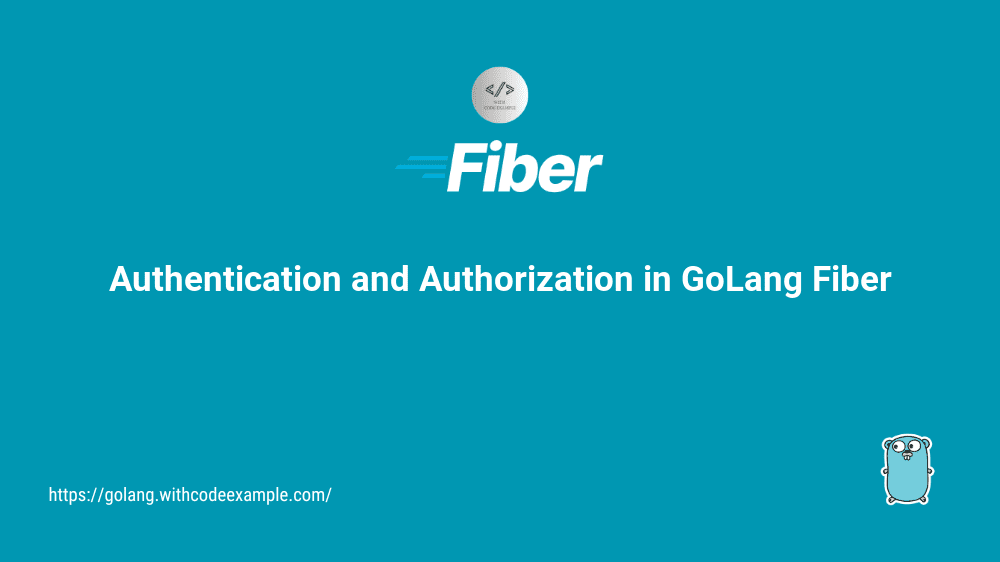Chapter 4: Getting Started with Gin
- With Code Example
- February 14, 2024
Unleash Your Inner Bartender with Chapter 4: Getting Started with Gin
Series - GIN Course
- 1: Chapter-1: Introduction to Gin Framework
- 2: Chapter 2: Setting Up the Environment for GIN Framework
- 3: Chapter 3: Project Structure In Gin Framework
- 4: Chapter 4: Getting Started with Gin
- 5: Chapter 5: Working with Models and Databases
- 6: Chapter 6: Advanced Routing and URL Parameters in Gin
- 7: Chapter 7: Authentication And Authorization In Gin
- 8: Chapter 8: Testing and Debugging in Gin
- 9: Chapter 9: Deploying Gin Applications
- 10: Chapter 10: Real-world Projects and Best Practices with Gin
In this chapter, we’ll dive into the Gin, a powerful Go web framework. We’ll unravel the process of crafting a simple Gin application, unravelling the intricacies of handling routes and requests. Furthermore, we’ll explore the implementation of fundamental middleware, unveiling techniques to define routes and route parameters with precision. Additionally, we’ll delve into the creation of controllers and the art of grouping routes, enabling better organization and maintainability within our application.

Prerequisites
- Introduction to Golang
- Introduction to Gin Framework
Creating a Simple Gin Application
Setting up a basic Gin server:
To get started with Gin, you first need to initialize a new Gin router. This can be achieved by importing the github.com/gin-gonic/gin package and creating a new instance of the Gin router using gin.Default(). This instance will serve as the entry point for your application’s HTTP requests.
Handling routes and requests:
With the Gin router initialized you can define routes for handling different HTTP methods and paths using methods like GET, POST, PUT, DELETE, etc. Each route is associated with a handler function that is responsible for processing incoming requests and generating appropriate responses.
Implementing basic middleware:
Middleware functions in Gin are used to intercept incoming requests before they reach the route handlers. This allows you to perform common tasks such as logging, authentication, and request preprocessing. Middleware functions can be registered globally for all routes or applied selectively to specific routes using the Use method of the Gin router.
Routing and Controllers
Defining routes and route parameters:
Routes in Gin can include parameters that capture dynamic values from the request URL. These parameters are specified using a colon followed by the parameter name in the route definition. For example, a route /users/:id captures the value of the id parameter from the request URL.
Creating controllers and handling requests: Controllers in Gin are responsible for handling requests and generating responses. A controller typically consists of one or more handler functions that correspond to different HTTP methods and route paths. By organizing your application’s logic into controllers, you can maintain a clean and modular codebase.
Grouping routes for better organization:
Grouping routes in Gin allows you to organize related routes under a common prefix or middleware. This can improve code readability and maintainability by reducing duplication and promoting code reuse. Routes can be grouped using the Group method of the Gin router, which creates a new router group with the specified prefix and middleware.
Routing and Controllers Example:
package main
import (
"github.com/gin-gonic/gin"
"net/http"
)
func main() {
// Initialize Gin router
router := gin.Default()
// Define routes
router.GET("/", func(c *gin.Context) {
c.JSON(http.StatusOK, gin.H{
"message": "Hello, Gin!",
})
})
router.GET("/users/:id", func(c *gin.Context) {
id := c.Param("id")
c.JSON(http.StatusOK, gin.H{
"id": id,
})
})
// Group routes
api := router.Group("/api")
{
api.GET("/users", func(c *gin.Context) {
c.JSON(http.StatusOK, gin.H{
"users": []string{"Alice", "Bob", "Charlie"},
})
})
}
// Start the server
router.Run(":8080")
}
This example demonstrates a simple Gin application with routes for handling root requests, requests with route parameters, and grouped routes under the /api prefix. As you explore Gin further, you’ll discover its rich features for building powerful and scalable web applications.





